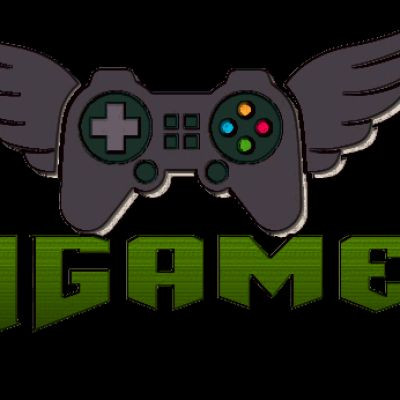How-to & Style


DIY gel fire pits are so cool. They don't take a ton of time or cost a boat load of money to make. Hey friend, this is Jeff from Home Repair Tutor and today I'll show you how to make sexy cement DIY gel fire pit in one day. Plus, after watching the video I guarantee you'll be able to make your fire pit better than mine.
You'll need a few supplies. Buy some cheap plastic bowls for about $5, Pam, Quikrete Quick Setting Cement, a margin trowel, bucket, palm sander, grout sponge, 60 and 150 grit sandpaper, lava rocks, and gel fuel cans.
The plastic bowls will be used to cast your cement bowl. The beauty of the quick setting cement is that your bowl will be finished in about 5-6 hours. Sweet. The lava rocks I used can be used in fires and won't pop or explode. That's kinda important. No one wants to lose an eye because of an exploding rock. You can find the gel fuel cans in the garden center of your local hardware store. They burn clean and won't emit a heavy smoke.
Here's a list of supplies needed for this project:
Plastic Bowls: https://amzn.to/2O0oGrz
Quikrete Fast-Setting Cement: https://amzn.to/2DfTdzB
Random Orbital Sander: https://amzn.to/2ZFU44e
Respirator: https://amzn.to/3f4xg4l
Chemical Resistant Gloves: https://amzn.to/2C7OoaX
Pam Cooking Spray:https://amzn.to/38ufMMm
Margin Trowel: https://amzn.to/2ZVRDuz
2 Gallon Plastic Bucket: https://amzn.to/2ByBS4A
Grout Sponge: https://amzn.to/3f4xLvf
Solid Gel Fuel: https://amzn.to/3f91C5W
Lava Rock: https://amzn.to/2D8yPjK
Some product links may be Amazon affiliate links. As an Amazon Associate we earn from qualifying purchases at no additional cost to you.
For more tips on how to build gel fire pits visit:
http://www.homerepairtutor.com/diy-gel-fire-pits/
0:00 Build Cool DIY Fire Pit
0:19 Get Ready
1:18 Spray Down Bowls
1:52 Mix and Pour Cement
3:20 Put Everything Together
#DIYfirepit #gelfirepit #tabletopfirepit
Want our newest DIY videos? Subscribe to our channel and hit the notification bell to see every upload. We upload new videos every Saturday.
Disclaimer:
Videos produced by Home Repair Tutor are provided for informational, educational, & entertainment purposes only. Some of these projects, materials, and techniques may not be appropriate for all ages or skill levels. Home Repair Tutor does not make any claims of the safety of the projects, techniques, or resources listed on this site and will not take responsibility of what you do with the information provided by this site. Viewers must be aware by doing DIY projects on their homes they are doing it at their own risk and Home Repair Tutor cannot be held liable if they cause any damage to their homes. Home Repair Tutor cannot claim liability with all applicable laws, rules, codes and regulations for a project.


This episode of 'On The Fly...DIY' is sponsored in part by Friar Tuck's in Crestwood, MO. https://www.friartuckonline.com/
If you've already made the firetable from the last episode, you'll want the gel fuel to go along with it! My recipe whips up MUCH faster than recipes that call for you to evaporate your vinegar/calcium carbonate AND only costs you 4 cents an ounce to make!


In this video, we use some of the calcium acetate that was made in a previous video to make some alcohol jelly!
-------------------------------------------------------------------------------
Merch - https://nilered.tv/store
-------------------------------------------------------------------------------
Join the community:
Patreon - https://www.patreon.com/nilered
Discord - https://discord.com/invite/3BT6UHf
NileRed Newsletter - https://nile.red/home#newsletter
You can also find me here:
Facebook - https://m.facebook.com/NileRed2
Instagram - https://m.instagram.com/nile.red
Twitter - https://mobile.twitter.com/NileRed2
Nile talks about lab safety: https://youtu.be/ftACSEJ6DZA


Once more we have got another episode in the Alternative Fire Starter series. This time was have something that is now in abundance to try and keep our hands clean from the Rona. Alcohol Gel, always keep some on your First Aid Kit. Use it regularly... however...
If you're dealing with damp tinder and kindling or need to get a fire going quick in a survival scenario the volatile alcohol vapour catches a spark and ignites. It will keep going until until its burnt out.
A special thank you the scottish based NWOBHW band Victorius for allowing Northern Limits Bushcraft and Survival to use their new single Never Be The Same as a backing track.
Check out the links below to find more of their material including the album Rise From The Flames.
http://www.victoriusmetal.co.uk/
https://instagram.com/victoriu....smetal?igshid=1wps1c
https://open.spotify.com/artis....t/3Dlfbkr1KrC8IT4KmW
#bushcraft #survival #campfire #Grayzy #northern_limits_bcs #alternativefirestarter #getoutside #outdoors #bushcraftinstructor #firemaking #survivalfire #wetfirelighting #victoriusmetal #victorius.bandcamp #NWOBHW #


This video quickly demonstrates how you can get fire with hand sanitizer and marginal tinder material.
______________________________________________________________
SIGMA 3 Survival School is one of the largest survival and bushcraft training organizations in the world. With over a decade in operation, and instructors on six continents, we have trained more survival instructors than anyone else in the world. All the information provided in these videos is from full time survival instructors with decades of experience. THIS IS ALL WE DO!
Our goal is teach you how to live off the land, with minimal tools and in relative comfort. We have designed a comprehensive 3 Part Survival Training System that will teach you everything you need to know in a relatively short amount of time, about how to provide for your basic survival priorities which include: shelter, water, fire, food, tools, medical, navigation/comms, & security.
We place a heavy emphasis on primitive skills and being able to reproduce your basic needs with minimal amounts of equipment and a heavy reliance on your wits and fortitude. Our goal is to teach you to be able to survive in almost any climate, with nothing more than your knife and maybe a few simple hand tools. If you’re interested in training or survival gear. Check out the links below!
______________________________________________________________
Survival Gear: https://survivalsystems.us
T-Shirts and Swag: https://teespring.com/stores/s....igma-3-survival-scho
______________________________________________________________
FINANCING AVAILABLE ON ALL SURVIVAL CLASSES! GET APPROVED IN MINUTES!
Our Premiere Training Programs:
45 Day Survival Instructor Program: https://survivalschool.us/s-3-....certifications/45-da
How our training programs work: https://survivalschool.us/how-....the-standard-system-
Most Popular Course: https://survivalschool.us/surv....ival-training-class-


Making fire gel. One of the friendlier chemical experiments you can do without needing to leave your house. Starting with just egg shells and vinegar you can make calcium acetate. And, from there making fire gel is easily obtained.
If you’d like to contact me please email at: glenn@cranialconstruction.com
Please consider supporting this channel by donating through PayPal:
https://www.paypal.com/donate/....?hosted_button_id=FX
Thank you as even the smallest of donations helps!
Disclaimer: Under no circumstances will Cranial Construction be held responsible or liable in any way for any content, including but not limited to, any errors or omissions in the content, or for any loss or damage of any kind incurred as a result of any content communicated in this video, whether by Cranial Construction or a 3rd Party. In no event shall Cranial Construction, or any name otherwise implied to be used in place of Cranial Construction that redirects to the same, be responsible for any consequential damages or loss connected to reproducing any of this video’s content, descriptions, visual aids, or instructions. Cranial Construction assumes no liability for property damage or injury incurred as a result of any of the information contained in this video. Use any and all information at your own risk. Any injury, damage, or personal loss that may result from the improper use of any tools, equipment, or chemicals, or from any of the information contained in this video, is the sole responsibility of the user and not Cranial Construction.
This video is strictly for demonstration purposes only.


Thanks for watching. If you like what I do Support me at
https://www.patreon.com/diycreators
View all my plans https://gumroad.com/diycreators
How to make a simple Diy Fire bowl with Gel Fuel " See description below for the details "
*******Affiliate Links*******
- Gel Fuel for the fire http://amzn.to/2afTY80
- Black Marbles http://amzn.to/2asn04K
- Instead of Marbles you can use this Fire Glass Onyx Black http://amzn.to/2aeRxXN
- Sakrete high strength concrete mix
- 2 bowls
- Wire mesh
Tools & Miscellaneous items Used
*******Affiliate Links*******
- Hand shovel http://amzn.to/2any1U9
- Rubber Mallet http://amzn.to/2aeqgAj
- Palm sander aka Sheet sander http://amzn.to/2aByvc8
- Sand paper 80 grit and 220 grit
- Any oil should work
- Weights or large rock (hold bowl in place)
- Tin Snips http://amzn.to/2anyNk9
**********Woodworking Plans (Big Bundle) https://gum.co/CpSyF**********
Instagram: https://www.instagram.com/Morediycreators/
Facebook: https://www.facebook.com/diycreators


In this video I demonstrate how to make your own gel fuel out of hand sanitizer for your gel fuel fireplace on the cheap. Anyone who owns a gel fuel fireplace knows that fuel is not chaep and this is a great alternative for those in need of a another means to heat. Below is the link to dollar tree so you can order by the case online. Hope it is a blessing to you.
Dollar tree hand sanitizer link:
http://www.dollartree.com/hous....ehold/Bonus-Buys/Ass
Make sure to visit http://www.soundingtheloudcry.com/ to find out more about the 7 Trumpets of Revelation, The Creators Calendar and much more.
Off Grid living is what you desire and independence? Then contact us at http://www.offgridcontracting.com/ and we can help make your dreams a reality.
For all your preparedness needs visit https://www.campingsurvival.com/
Epic Survival and Tactical gear delivered to your door step monthly
http://www.battlbox.com/
Looking for Alternative Energy for your prepping needs? Offering solutions for applications in Solar, Wind and more visit: http://hurricanewindpower.com/
Want to grow your own food with a Geodesic greenhouse dome?Then visit http://ziptiedomes.com/ for an affordable solution specializing in greenhouses, chicken tractors and more.
Apocabox! Hand selected survival tools http://www.myapocabox.com
The subscription box for homesteaders https://www.thehomesteadbox.com/
INTRO THUNDER BY:Mark DiAngelo
INTRO/OUTRO SOUNDS AND MUSIC PROVIDED BY:POND5.COM


Craig Beals shows how to make Fire Gel Fuel similar to Sterno with things you have in your kitchen!
Gel fuel is used for Survival Kits, Camping, Cooking, Fireplace, Warming Trays, Fondue, S'Mores and a whole lot more. Craig shows how egg shells or chalk (Calcium carbonate) react with vinegar (Acetic acid) to form Calcium Acetate (the gel in Gel Fuel). The gel forms with the addition of an alcohol which allows the gel fuel to burn!
For all instructions and materials visit my website: https://www.bealsscience.com/p....ost/2017/11/07/fire-
Click to order 95% Ethyl Alcohol: http://amzn.to/2AeS6tT
https://www.Facebook.com/CraigBealsScience
https://www.Instagram.com/BealsScience
https://www.Twitter.com/BealsScience
SUBSCRIBE and Ring the Bell: https://goo.gl/bVnT8F
WARNING:
This video is only for entertainment purposes. If you rely on the information outlined in this video, you assume responsibility for the results. As with any experiment, proceed at your own risk.
Music:
Tennessee Hayride by Jason Shaw cc3.0 fma.org
Funky Junky by Jason Shaw cc3.0 fma.org












